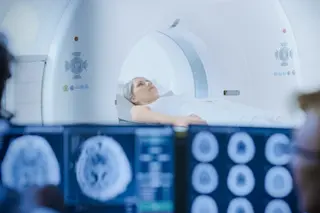Each time andrea stuck her tongue out, it looked more and more as if she was trying to tell me something. I had met her only ten minutes earlier, but I already knew her background. Andrea had sustained serious head injuries in an automobile accident 13 months ago and was not discovered by the police for seven hours. On the way to the hospital, she had had a cardiac arrest. The emergency team was able to restart her heart, but she never regained consciousness.
Her three grown children had done everything they could to aid their mother’s recovery from coma—physical therapy, playing favorite music, stroking her, aromas, and even pleading with her. But after several months without any response, they had grown discouraged and begun seriously to consider how they could help fulfill their mother’s wishes. A divorced psychologist, Andrea had discussed with her children the case of Karen Ann ...














